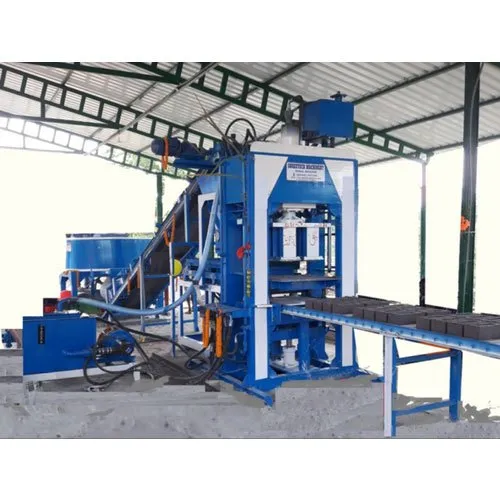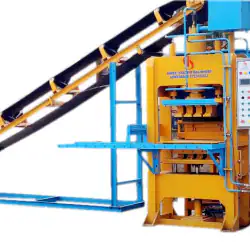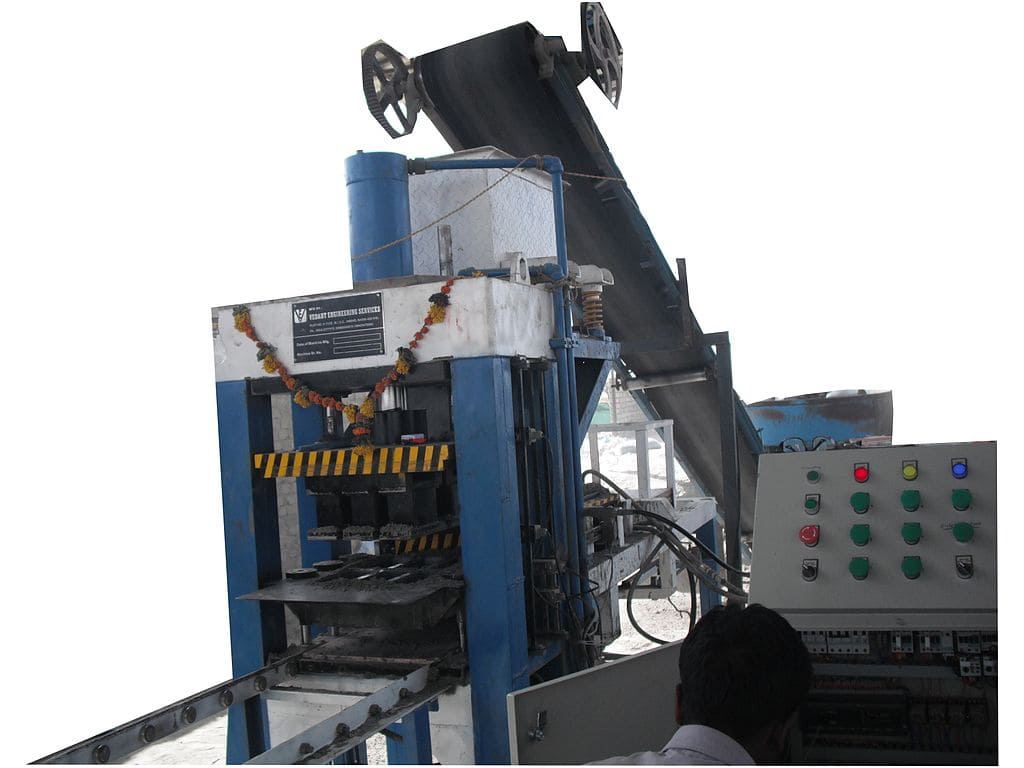In the fast-evolving landscape of the construction industry, sustainability has taken center stage. The demand for eco-friendly construction materials has surged, prompting builders and developers to explore alternatives to traditional clay bricks. One such alternative is fly ash bricks. In this comprehensive guide, we will delve deep into the world of fly ash bricks, understanding what they are, their numerous advantages, the factors that influence their pricing, the types of fly ash brick machines available, and how to choose the right one. We will also discuss maintenance and operating costs, government subsidies and incentives, and the significant environmental benefits of using fly ash bricks in construction (Fly Ash Bricks Machine Price).
About Fly Ash Bricks
The construction industry, a significant driver of global economic growth, is undergoing a transformation. With environmental concerns becoming increasingly critical, there is a growing need for sustainable construction materials. Fly ash bricks have emerged as an eco-conscious choice, offering builders and developers a way to reduce their carbon footprint while maintaining structural integrity.

What Are Fly Ash Bricks?
Fly ash bricks are a testament to innovation in construction materials. They are primarily composed of fly ash, a waste product generated by coal combustion in thermal power plants. When combined with cement, sand, and water, fly ash becomes the building block of these bricks. The resulting product possesses remarkable qualities that make it a compelling choice for construction.
Advantages of Fly Ash Bricks
1. Eco-Friendly Construction
Fly ash bricks represent a significant step towards sustainable construction practices. Their production requires no excavation of topsoil, preserving precious natural resources. This eco-friendliness aligns with the global shift towards green building solutions.
2. Exceptional Strength and Durability
One of the standout features of fly ash bricks is their strength. They exhibit excellent compressive strength, making them resilient to various stresses. Furthermore, their durability ensures that structures built with fly ash bricks stand the test of time.
3. Cost-Effectiveness
Cost-effectiveness is a crucial factor in construction projects. Fly ash bricks often boast lower production costs compared to traditional clay bricks. These cost savings can be passed on to consumers or invested in further enhancing the construction.
4. Superior Thermal Insulation
Fly ash bricks offer superior thermal insulation properties. They help regulate indoor temperatures, reducing the need for excessive heating or cooling. This not only enhances comfort but also contributes to energy savings.
5. Reduced Carbon Footprint
The construction industry is a significant contributor to carbon emissions. Fly ash bricks address this concern by minimizing carbon emissions during production. By choosing fly ash bricks, builders actively participate in the fight against climate change.
Types of Fly Ash Brick Machines
1. Manual Machines
Manual fly ash brick machines require human intervention at various stages of the production process. They are suitable for small-scale operations with limited production requirements.
2. Semi-Automatic Machines
Semi-automatic machines combine human labor with automation. They offer a balance between cost and efficiency, making them a popular choice for medium-sized projects.
3. Fully Automatic Machines
Fully automatic fly ash brick machines are highly efficient and require minimal human intervention. They are ideal for large-scale production and can significantly reduce labor costs.
Choosing the Right Fly Ash Brick Machine
1. Production Capacity
Selecting the appropriate fly ash brick machine is pivotal. Production capacity should align with the scale of the construction project. Oversized machines may lead to unnecessary expenses, while undersized ones can hinder project timelines.
2. Automation Level
The level of automation should match the available labor force and budget constraints. Fully automatic machines, while efficient, may require a more substantial initial investment.
3. Budget Considerations
Budget constraints are a crucial factor in choosing the right machine. It’s essential to strike a balance between initial costs and long-term savings in production and labor.
Comparing Prices
To make an informed decision, it is vital to compare prices from multiple suppliers. However, this comparison should extend beyond just the initial machine cost. Evaluating long-term operating costs and maintenance requirements is equally important.
Maintenance and Operating Costs

1. Regular Maintenance
Regular maintenance is key to ensuring the longevity and consistent performance of a fly ash brick machine. Ignoring maintenance can result in costly repairs and downtime.
2. Lifespan of a Fly Ash Brick Machine
The lifespan of a fly ash brick machine varies depending on its quality, usage, and maintenance. However, a well-maintained machine can last anywhere from 5 to 10 years or more.
Government Subsidies and Incentives
1. The Impact of Government Support
Many governments worldwide recognize the environmental benefits of fly ash bricks and offer subsidies and incentives to promote their use. Exploring these options can significantly reduce project costs.
2. Reduction in Project Costs
Government support not only reduces the cost of materials but also provides financial incentives, ultimately making fly ash bricks an even more attractive choice for construction projects.
Environmental Benefits
1. Mitigating Carbon Emissions
The environmental benefits of fly ash bricks extend beyond individual construction projects. By reducing carbon emissions during production and conserving natural resources, they contribute to a greener, more sustainable future.
2. Conserving Natural Resources
The elimination of topsoil excavation for brick production helps preserve essential natural resources, ensuring a healthier planet for future generations.
Fly Ash Bricks Machine Price
In India, the price of fly ash bricks varies depending on factors such as location, quality, and market demand. On average, you can expect to find standard fly ash bricks priced between INR 4 to INR 6 per brick. However, prices may fluctuate, so it’s essential to obtain quotes from local suppliers for the most accurate pricing information.
Fly Ash Bricks Machine Prices with several Types
| Type of Fly Ash Bricks | Size (in inches) | Price (per 1000 bricks) |
|---|---|---|
| Solid Fly Ash Bricks | 9×4.5×3 | ₹5,000 – ₹6,500 |
| Hollow Fly Ash Bricks | 16x8x8 | ₹6,500 – ₹7,500 |
| Perforated Fly Ash Bricks | 9×4.5×3 | ₹5,500 – ₹7,000 |
| Fly Ash Cement Bricks | 9×4.5×3 | ₹5,200 – ₹6,800 |
| Fly Ash Clay Bricks | 9×4.5×3 | ₹5,500 – ₹7,000 |
| Lightweight Fly Ash Bricks | 9×4.5×3 | ₹5,300 – ₹6,900 |
- Fly Ash Bricks Price in India:
- Standard fly ash bricks typically cost around INR 4 to INR 6 per brick. Prices may vary based on location, quantity, and the supplier’s quality standards.
- Fly Ash Brick Machine Price in India:
- The cost of a manual fly ash brick machine starts at approximately INR 1.5 lakhs, while semi-automatic machines range from INR 2.5 lakhs to INR 4 lakhs. Fully automatic machines, offering higher production capacities, can cost between INR 10 lakhs to INR 25 lakhs, depending on their features and capabilities.
Factors Affecting Fly Ash Bricks Prices
1. Raw Material Costs
The price of fly ash bricks is closely tied to the costs of their raw materials, primarily fly ash, cement, and sand. Fluctuations in these material costs can have a direct impact on the final pricing of fly ash bricks.
2. Manufacturing Process
The efficiency of the manufacturing process plays a pivotal role in determining the cost of production. Modern, technologically advanced machinery can significantly reduce manufacturing costs.
3. Location and Transportation
The location of the manufacturing unit and the proximity to construction sites influence transportation costs. Shorter distances often result in lower prices for consumers.
4. Market Demand
Market dynamics play a crucial role in pricing. High demand for fly ash bricks can lead to price increases, while lower demand can result in competitive pricing.
Conclusion:
Fly ash bricks represent a pivotal shift towards sustainable construction practices. While their prices may fluctuate due to several factors, including raw material costs and market dynamics, their long-term advantages and positive impact on the environment make them a compelling choice for builders and developers alike. As the construction industry continues its journey towards sustainability, the demand for fly ash bricks is poised to soar.
Frequently Asked Questions:
-
Are fly ash bricks as strong as traditional clay bricks?
Yes, fly ash bricks are known for their excellent strength and durability.
-
How do government incentives affect fly ash brick prices?
Government incentives can significantly reduce the cost of using fly ash bricks in construction projects.
-
What is the typical lifespan of a fly ash brick machine?
The lifespan of a fly ash brick machine depends on its maintenance and usage but can range from 5 to 10 years or more.
-
Can fly ash bricks be used for all types of construction projects?
Yes, fly ash bricks are versatile and can be used in various construction applications.
-
Are there any disadvantages to using fly ash bricks?
While they offer numerous advantages, fly ash bricks may require specialized machinery for production, which can be an initial investment.
-
What Are the Key Differences Between Fly Ash Bricks and Traditional Clay Bricks?
Understanding the distinctions between these two types of bricks can help in making an informed choice for construction projects.
-
Are Fly Ash Bricks Available in Different Sizes and Shapes?
Learn about the variety of sizes and shapes available for fly ash bricks and how they can be customized for specific construction needs.
-
What Are the Maintenance Requirements for Structures Built with Fly Ash Bricks?
Knowing how to maintain buildings constructed with fly ash bricks is essential to ensure their longevity and structural integrity.
-
Do Fly Ash Bricks Require Specialized Construction Techniques?
Discover if there are specific construction methods or techniques required when using fly ash bricks.
-
Can Fly Ash Bricks Be Used for Residential Construction?
Explore the suitability of fly ash bricks for residential homes and the benefits they bring to homeowners.
-
What Is the Environmental Impact of Fly Ash Brick Production?
Delve deeper into the environmental aspects of fly ash brick manufacturing, including carbon emissions and resource conservation.
-
How Does the Use of Fly Ash Bricks Affect Indoor Air Quality?
Understand how fly ash bricks contribute to healthier indoor air quality, especially concerning dust and allergen reduction.
-
Are There Any International Standards or Certifications for Fly Ash Bricks?
Learn about recognized standards and certifications that ensure the quality and eco-friendliness of fly ash bricks.
-
What Are the Long-Term Cost Savings of Using Fly Ash Bricks in Construction?
Explore the financial benefits of choosing fly ash bricks over traditional materials in terms of reduced energy costs and maintenance.
-
How Can I Find Reliable Suppliers of Fly Ash Bricks and Machines in My Area?
Discover tips and resources for locating reputable suppliers of fly ash bricks and the machinery needed for their production.
Recommended:
Epson L130 Head Price (2023) | Latest Prices, Setup, Warranty, Offers
Crompton Motor 10 HP 1440 RPM Price (2023) | An In-Depth Exploration

